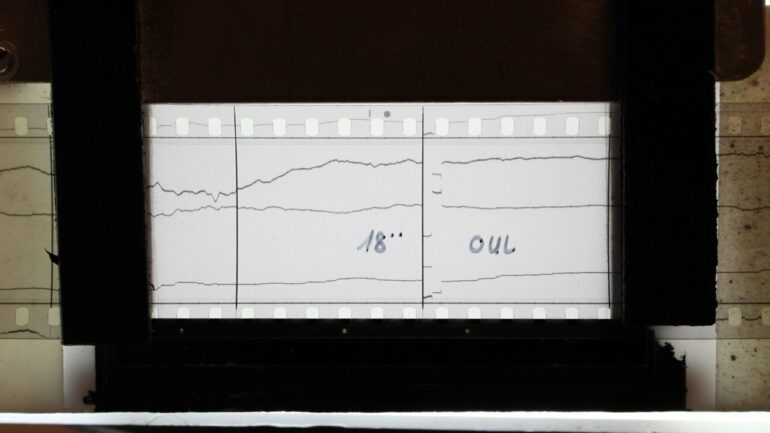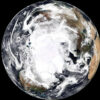A new study shows that there is greater local variation in the impact of solar storms on Earth than previously estimated. Researchers show that the effects can vary widely even over distances as small as 100 kilometers. The findings are published in Scientific Reports.
Local changes in the magnetic environment have so far remained largely unexplored due to the sparse magnetometer array in the main observing area. Today, solar storms, or geomagnetic storms, are recorded on average by magnetometers spaced about 400 km apart.
Solar storm effects are caused by fast solar wind streams, which cause large electric currents to flow through the ionosphere of the Earth’s auroral region, but the behavior of these currents during storms is still not fully understood. Solar storms also appear as auroras.
Researchers from the Sodankylä Geophysical Observatory (SGO) and the Ionospheric Physics Group at the University of Oulu, Finland studied the local magnetic field perturbations in the auroral region during space storms using historical data.
Large regional differences in the effects of solar storms
The new study looked at data from a strong solar storm in December 1977 from all 32 stations of the then Scandinavian Magnetometer Array (SMA) network in the Nordic countries, which is denser than the current network, and largely unexplored.
Studying the data was laborious, because in 1977, changes in the Earth’s magnetic field were seen as fluctuations recorded by magnetometers on film strips. There were almost 40 kilometers of untouched, small film strips from nearly 50 years ago.
It was hand-photographed frame by frame over several dozen meters for the new study, and the images were digitized. Using the digitized values and modern magnetic data, clear regional differences in solar storm intensity were found.
“Usually today, we look at the whole of the Earth’s auroral region as a single entity. However, we used more than 30 instruments to map the effects of a single solar storm from the Arctic Ocean to the Bothnian Sea,” says Otto Kärhä, a doctoral researcher at the University of Oulu who also photographed much of the old films. He will present the new findings at the American Geophysical Union (AGU) San Fransisco Fall Meeting 2023 in December.
The rarity of large geomagnetic storms limits their study, and local effects have historically left largely unstudied. The largest solar storm in recorded history was Carrington in 1859. Descriptions at the time showed the sun brightening and being dazzling even to closed eyes. The Carrington solar storm caused sparks on telegraph lines and fires. Today, the consequences of a magnetic storm of this magnitude would be devastating for power grids and telecommunications links, including satellites.
In light of new research, local variations in a Carrington-class solar storm could be as high as 150 nT (nanotesla)/10 km. The difference is comparable to a small breeze in Muonio and a magnetic whirlwind 140 km away in Sodankylä.
“When such a solar storm hits, too sparse magnetometer network could lead to underestimation of local magnetic disturbances and underestimation of the preparedness for them,” says Professor Eija Tanskanen, Director of SGO.
Large solar storm possible in the near future: Denser network to warn of local effects
Scientists around the world are fairly unanimous that in the near future, a historically large solar storm may hit the Earth.
“The variability in experts’ estimates of its impact stems from the fact that the Earth’s geomagnetic environment is still poorly understood, and solar storms cause very variable effects to the auroral currents. The current Intermagnet network has too few magnetometers in the polar region, most commonly at intervals of about 200–400 km, when it would be better to have them at 100 km intervals,” says Tanskanen. The magnetometers are hosted by various research institutes and observatories.
Historical data from the new study revealed magnetic field structures in the auroral belt that cannot be observed with the current network of instruments.
“A denser magnetometer network would help to understand the complex structure of the magnetic field during solar storms. We could provide local warning of solar storm movements, and better safeguard infrastructure vulnerable to magnetic disturbances. Air traffic, for example, could also be warned more regionally about strong magnetic clouds and storms,” Tanskanen suggests.
More information:
Otto Kärhä et al, Large regional variability in geomagnetic storm effects in the auroral zone, Scientific Reports (2023). DOI: 10.1038/s41598-023-46352-0
Provided by
University of Oulu
Citation:
Solar storms hit more locally than expected: Current instrument network too sparse, says study (2023, November 27)



